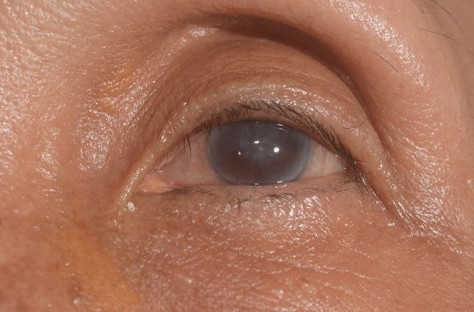Introduction
Cataracts are a prevalent condition that affects millions of people globally, particularly as they age. Cataracts are the leading cause of blindness worldwide, significantly affecting vision and quality of life. However, not all cataracts are the same, as they come in various types with different characteristics, causes, and implications for vision. By understanding the types of cataracts, individuals can make informed decisions about treatment, prevention, and overall eye health. This guide explores cataract types, their causes, symptoms, treatment options, and strategies for prevention, offering valuable insights for those looking to understand or help manage the condition.

What is a Cataract?
A cataract is a clouding of the natural lens inside the eye, which is normally transparent. The lens focuses light on the retina, allowing you to see clearly. When a cataract forms, it interferes with this process, causing blurry or distorted vision. Cataracts can develop in one or both eyes, and their progression can range from mild to severe, impacting everyday activities like reading, driving, or watching TV.
There are several types of cataracts, each distinguished by the location of the clouding, the cause of the condition, and the nature of the clouding itself. Let’s explore the main types of cataracts in detail.

1. Age-Related Cataracts
Age-related cataracts are the most common form of cataracts, affecting older adults, usually after the age of 60. As you age, the proteins in your eye’s natural lens begin to break down and form clumps, causing the lens to become cloudy. This process typically occurs gradually, and the symptoms may not be noticeable at first. Over time, the clouding worsens, leading to blurry vision, difficulty seeing at night, and sensitivity to light.
Age-related cataracts can be classified into three main types based on their location in the lens:
1.1. Nuclear Cataracts
Nuclear cataracts develop in the central part (nucleus) of the eye’s lens. This is one of the most common forms of age-related cataracts. As nuclear cataracts develop, the lens becomes progressively more opaque and yellow or brown in color. This type of cataract may lead to blurry vision, difficulty with color perception, and a decrease in night vision.
Interestingly, some people with nuclear cataracts may experience a temporary improvement in their near vision, a phenomenon known as “second sight.” This occurs because the lens becomes more rigid and may temporarily improve the ability to focus on close objects. However, this effect is short-lived, and the cataract will continue to progress, eventually causing significant vision impairment.
1.2. Cortical Cataracts
Cortical cataracts occur in the outer rim (cortex) of the lens and spread toward the center in a spoke-like pattern. These cataracts often cause glare and halos around lights, particularly at night. People with cortical cataracts may find it difficult to see in low-light conditions and may experience blurry vision or a feeling of being “foggy.”
The progression of cortical cataracts is usually slower than that of nuclear cataracts, but the symptoms can be more pronounced due to the impact on peripheral vision.
1.3. Posterior Subcapsular Cataracts
Posterior subcapsular cataracts form at the back (posterior) of the lens, right in the path of light entering the eye. These cataracts tend to progress more quickly than nuclear or cortical cataracts and may cause significant vision problems within a shorter period. Individuals with posterior subcapsular cataracts often experience difficulty reading in bright light, glare from headlights when driving at night, and blurred vision even during the day.
This type of cataract is commonly associated with individuals who have diabetes or those who take long-term use of corticosteroid medications.
2. Congenital Cataracts
Congenital cataracts either occur at birth or develop during early childhood. While rare, they can significantly affect a child’s vision and development. Congenital cataracts may be inherited, or they can occur due to other factors, such as infections or trauma during pregnancy, or complications from conditions like rubella or Down syndrome.
Congenital cataracts can affect one or both eyes and may range from small, insignificant opacities to more severe cataracts that require surgical removal. In cases where congenital cataracts are not addressed, they can cause amblyopia (lazy eye) and other vision problems.
Treatment typically involves surgery to remove the cloudy lens and, in some cases, the insertion of an intraocular lens (IOL) to restore vision. Early intervention is crucial to prevent long-term vision impairment in children.
3. Traumatic Cataracts
Traumatic cataracts occur as a result of injury or trauma to the eye. These cataracts can develop immediately after the injury or many years later. The trauma can be caused by a variety of factors, including blunt force, penetration from sharp objects, chemical burns, or radiation exposure.
The injury causes damage to the lens or the surrounding tissues, leading to the formation of cataracts. Depending on the severity of the trauma, the cataract may form immediately or progressively over time. Surgery is often required to remove the cataract and restore vision.
4. Secondary Cataracts
Secondary cataracts develop as a result of other medical conditions, medications, or surgical procedures. Some of the conditions that can lead to secondary cataracts include:
4.1. Diabetes
People with diabetes are more prone to developing cataracts, particularly posterior subcapsular cataracts. High blood sugar levels can lead to changes in the lens of the eye, which accelerates cataract formation.
4.2. Medications
Long-term use of corticosteroids, particularly oral steroids or eye drops, can increase the risk of developing cataracts. These medications can cause the proteins in the lens to break down more quickly, leading to clouding.
4.3. Previous Eye Surgery
Some patients who have undergone eye surgery, such as retinal surgery or glaucoma surgery, may develop cataracts as a complication. This is more common in people who are over the age of 60 or have other underlying eye conditions.
4.4. Uveitis
Uveitis, or inflammation of the middle layer of the eye, can also contribute to cataract formation. Inflammatory conditions may damage the lens and increase the likelihood of developing cataracts.
5. Radiation Cataracts
Radiation cataracts develop after exposure to ionizing radiation, such as X-rays, chemotherapy, or radiation therapy for cancer treatment. The lens is particularly sensitive to radiation, and prolonged exposure can cause the proteins in the lens to break down, resulting in cataract formation.
Radiation cataracts may not develop immediately after exposure; instead, they can take years to manifest. People who have undergone radiation therapy are typically monitored for cataracts as part of their ongoing medical care.
Symptoms of Cataracts
Cataracts often develop gradually, and the symptoms may not be immediately noticeable. As the cataract progresses, the following symptoms may appear:
- Blurry or cloudy vision
- Difficulty seeing at night
- Sensitivity to light and glare
- Fading or yellowing of colors
- Double vision in one eye
- Frequent changes in prescription glasses or contact lenses
Diagnosis of Cataracts
Cataracts are diagnosed through a comprehensive eye examination, which includes a visual acuity test and a slit-lamp examination. During the slit-lamp exam, your eye doctor will use a special microscope to examine the lens and determine the extent of clouding. Additionally, your eye doctor may perform other tests, such as tonometry (to measure intraocular pressure) and pupil dilation to fully assess the condition of your eye.
Treatment Options for Cataracts
In the early stages, cataracts may not require immediate treatment, and a change in prescription glasses or the use of brighter lighting may help manage the symptoms. However, once cataracts significantly impair vision and affect daily activities, surgery is the only effective treatment option.
Cataract Surgery involves the removal of the cloudy lens and the implantation of a clear intraocular lens (IOL). The surgery is typically done on an outpatient basis, and recovery times are generally short. The type of IOL used will depend on the patient’s individual needs, including whether they have additional refractive errors like astigmatism.
Prevention of Cataracts
While cataracts cannot always be prevented, certain lifestyle changes can help reduce the risk of developing cataracts or slow their progression. These include:
- Protecting your eyes from UV rays by wearing sunglasses with UV protection
- Eating a nutritious diet packed with antioxidants, like vitamins C and E, supports eye health.
- Quitting smoking, as smoking is a known risk factor for cataracts
- Managing underlying health conditions, such as diabetes
- Regular eye exams to monitor changes in vision and detect cataracts early
Conclusion
Cataracts are a common and often age-related condition that can cause significant vision impairment. Understanding the different types of cataracts—age-related, congenital, traumatic, secondary, or radiation-induced—helps individuals manage their eye health proactively. Early detection, regular eye exams, and timely treatment are key to preserving vision and improving the quality of life.
If you or a loved one is experiencing symptoms of cataracts, it’s essential to consult an eye specialist to discuss potential treatment options. Cataract surgery has an extremely high success rate, and modern advancements in intraocular lens technology offer improved outcomes for those with various types of cataracts.
Author Details:
Dr. Sushruth Appajigowda holds a prominent position as a Cornea, Cataract, Glaucoma, and LASIK Surgeon in Bangalore. He serves as the chief Cataract and Refractive surgeon at Vijaya Nethralaya Eye Hospital, Nagarbhavi Bangalore. Renowned as one of the finest LASIK surgeons nationwide, he brings with him over 12+ years of experience across multiple LASIK platforms, including ZEISS, ALCON, SCHWIND, AMO, and Bausch and Lomb. Having successfully conducted over 5000 LASIK procedures, Dr. Sushruth holds the title of a Certified Refractive Surgeon and a Fellow of the All India Collegium Of Ophthalmology. Furthermore, he stands as a distinguished speaker at various National and International Forums, using his expertise to guide you in selecting the most suitable procedure based on your health requirements.

http://vijayanethralaya.com/link-in-bio/
FAQs
1. What are the main types of cataracts?
The main types of cataracts include age-related cataracts (nuclear, cortical, and posterior subcapsular), congenital cataracts, traumatic cataracts, secondary cataracts, and radiation cataracts.
2. Can cataracts be prevented?
While cataracts cannot always be prevented, certain lifestyle habits such as wearing sunglasses with UV protection, quitting smoking, and maintaining a healthy diet can reduce the risk.
3. How long does it take to recover from cataract surgery?
Most people experience significant vision improvement within a few days to weeks after cataract surgery, but full recovery may take a few weeks.
4. What are the symptoms of cataracts?
Symptoms of cataracts include blurry vision, difficulty seeing at night, sensitivity to light, faded colors, and frequent changes in prescription glasses.
5. Is cataract surgery safe?
Cataract surgery is considered one of the safest and most effective surgical procedures, with a high success rate and minimal complications.











